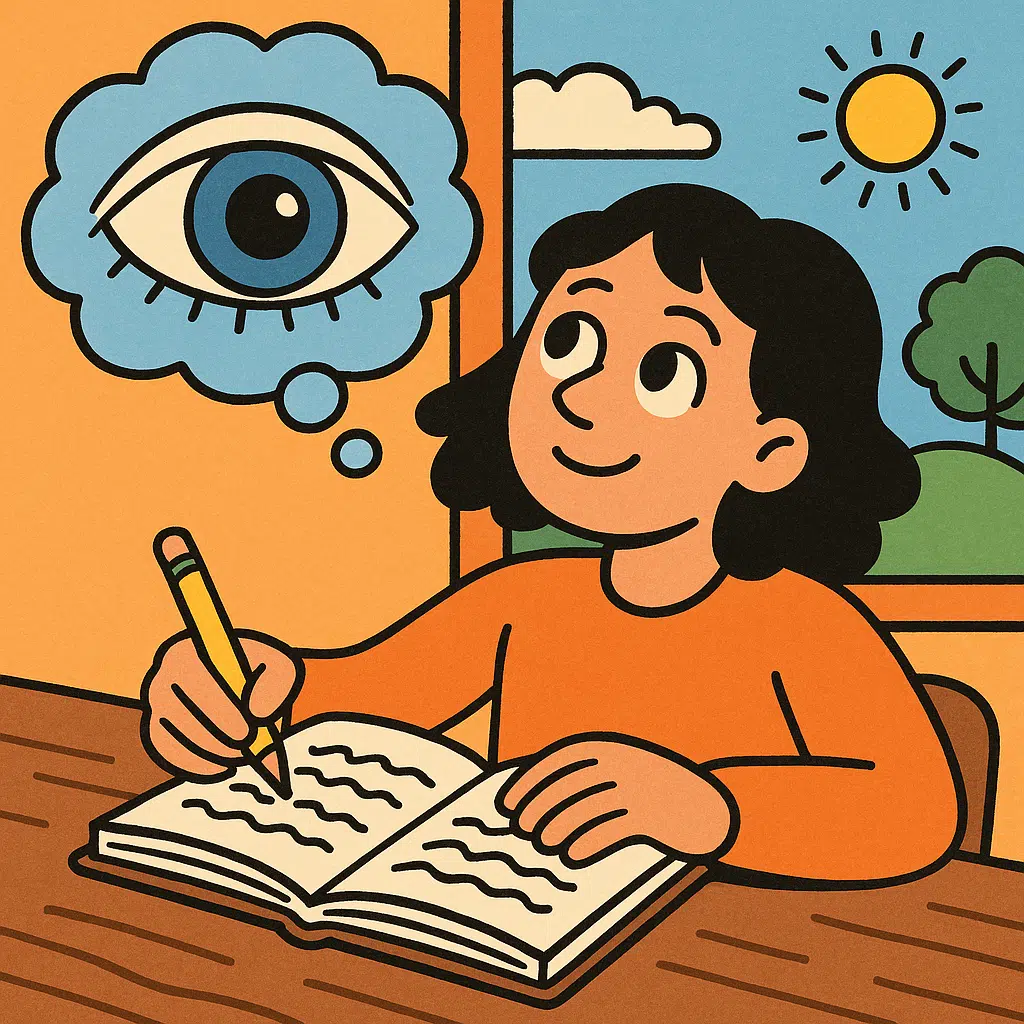The Practice of Writing Just to See
Charlotte Stone July 30, 2025
The practice of writing just to see has become a powerful way to spark ideas, reduce anxiety, and fuel larger writing projects.

Why This Is Everywhere in 2025
The practice of writing just to see is trending—creative thinkers and professionals alike are embracing it as a tool for experimentation and clarity. You’ll see it mentioned in writing communities, coaching programs, and AI‑club prompts.
What Is “Writing Just to See”?
This refers to free writing—unstructured, spontaneous writing done without concern for grammar or audience. Writers simply write to explore thoughts, generate ideas, and observe what emerges. Originating in academic and creative writing pedagogy, free writing has long been praised as a way to bypass perfectionism and silence inner critics .
Why It’s Hot Right Now
1. Creativity Through Process
Writers—both emerging and veteran—are discovering that showing up to the page regularly, with no pressure, unlocks fresh ideas. As one Reddit commenter put it, “Why would you waste days and weeks for your drafts, when you can draft 20,000 words in a day?” . Many view free writing as rehearsal space for better writing later.
2. AI Prompts & Hybrid Methods
With AI tools like ChatGPT and others, writers now feed prompts and then write alongside or beneath generated text—to see where ideas go. Research shows professional writers integrate AI deliberately, treating it as collaborator or creative provocation . The practice of writing just to see fits well with this hybrid creative process.
3. Emotional and Cognitive Benefits
Studies find expressive writing—scribbling raw reflections for a few days—reduces stress, improves health outcomes, and deepens self‑understanding . Rather than chasing a finished product, writing just to see itself offers therapeutic and reflective value.
How to Practice Writing Just to See (A Practical Guide)
Here’s how you can make this a productive daily or weekly habit:
Step 1: Set a Timer
Commit to 10–20 minutes. Don’t edit. Let your thoughts spill onto the page.
Step 2: Use Prompts—or None at All
Try starter phrases like “I wonder…” or “What if…” or begin without a plan and write continuously.
Step 3: Don’t Judge Your Output
Nothing needs to make sense. This isn’t for publication—it’s a playground for ideas.
Step 4: Reflect Later
After 24 hours, revisit what you’ve written. Highlight surprising ideas, phrases, or patterns.
Step 5: Repurpose or Expand
Tuck interesting bits into a longer draft, blog post, or creative work when the moment feels right.
Emerging Trends Around This Practice
AI‑aided Free Writing
Writers are now using AI-generated text as a jumping‑off point. They may paste an AI‑suggested sentence and then write around it to see where inspiration flows .
Visual Writing Formats
Experimental writers are exploring “codework,” stream‑of‑consciousness and visual writing forms that blend code or diagrams with words—writing just to see how unconventional forms reveal new meaning .
Community Circles & Writing Labs
Groups like writing circles and experimental labs encourage “writing just to see” as collaborative exploration, often featuring silent group writing sessions and peer sharing afterward .
Benefits of the Practice of Writing Just to See
| Benefit | Description |
|---|---|
| Idea Generation | Sparks unexpected storylines, essays, marketing concepts. |
| Overcoming Fear | Removes editing mindsets—writers can start anywhere. |
| Emotional Clarity | Links to therapeutic writing—supports emotional expression. |
| Craft Discovery | Reveals voice, phrasing, and rhythm in a low‑stakes setting. |
Tips to Make It Stick
- Schedule it in: Morning pages, lunch scribbles, or nightly brain dumps.
- Keep it private: Knowing no one else reads it helps freedom flow.
- Use varied media: Try writing by hand vs. typing; mix in free‑form shape or codework.
- Track your progress: Keep a log. Often first lines lead to something memorable.
Common Misunderstandings
“It’s a waste if I don’t publish it.”
Actually, it’s not. The point of writing just to see isn’t to create something publishable—it’s to explore your thoughts. Not everything has to become content. Sometimes, the most important breakthroughs happen in the pages no one ever reads.
“But I don’t like messy writing.”
Totally get that—but messy writing is where the magic happens. It’s not supposed to be clean. It’s supposed to be honest. Let it be disorganized, awkward, and raw—that’s how you discover ideas you didn’t know you had.
“Why not just outline instead?”
Outlines are great for organizing what you already know. But free writing helps you figure out what you know. It’s not about structure—it’s about surprising yourself. Think of it as brainstorming with a pen.
Real-World Case: From Experiment to Entire Projects
One writer committed to a week of daily free writing and unexpectedly uncovered a rich, emotional backstory for a side character—what started as a throwaway detail ended up becoming the heart of an entire novel. Another writer spent an afternoon rapidly brainstorming blog titles without judgment. After revisiting the list, they realized they had a full quarter’s worth of content ideas and used them to build a strategic editorial calendar. These examples show that when you let yourself write freely, without pressure, you don’t just generate ideas—you often discover the very foundation for your next big project.
Why It Resonates in 2025
- Overwhelm and perfectionism plague creators—free writing acts as permission to not perform.
- AI is everywhere, yet many writers want to remain anchored in their own voice. Writing just to see reclaims the author’s inner voice.
- Mental health and creativity converge: expressive writing is celebrated as both tool and relief.
Wrapping Up
The practice of writing just to see is more than a trend—it’s a quiet rebellion against the pressure to always have a plan, a point, or a polished product. It’s a return to writing as exploration, as emotional release, as a way to process the chaos of life one word at a time.
Whether you’re stuck in a draft, battling self-doubt, or just trying to think clearly in a noisy world, writing just to see gives you a low-pressure way to reconnect—with your thoughts, your creativity, and even your faith. It’s not about perfection or productivity. It’s about showing up, being honest, and letting the words lead.
Sometimes, the breakthrough doesn’t come from knowing where you’re going—but from daring to start without a map.
References
Alidina, S. (2016). A mindful writing practice for those who like to keep doing. Mindful. https://www.mindful.org
Taylor, L. (2024). The writing exercise that made my career. Medium.https://medium.com
Farnam Street. (n.d.). Writing to Think. Farnam Street Blog. https://fs.blog







